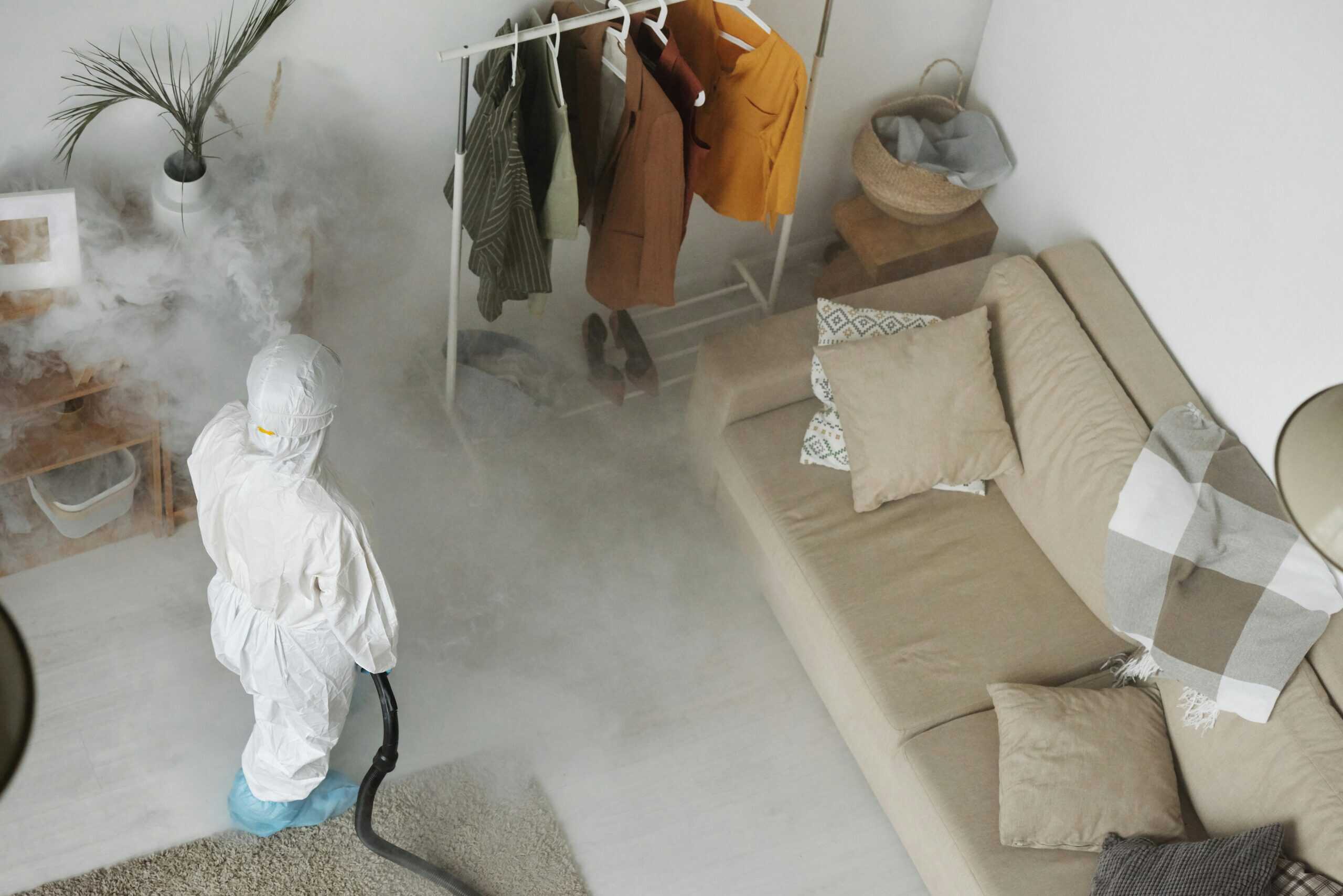Nobody wants to entertain unannounced guests, much less pests who have gotten inside without knocking. While small fixes like mosquito traps and mouse traps can cut down on pests, prevention is the best way to keep those creepy crawlies and stalking rodents at bay.
If you've recently purchased a new home or have observed an increase in pests, there are numerous modest and substantial repairs you can make to your building to prevent infestation. Furthermore, many of your options are inexpensive, simple to use, or may be accomplished with DIY skills.
Having said that, it helps if your property is designed to prevent infestations in the first place. The outside and interior design of a home might help to keep pests out.
Design Considerations That Help With Pest Control
The team at Briostack suggests that you should hire a pest control service if an infestation is already underway. But, these design considerations should prevent one from happening.
1) Design a Property With Positive Airflow

Image Source: pellawi.com
The air pressure in a building is neutral when it is first constructed. This is similar to outdoor air. When the doors, windows, and ventilation systems are installed, the building is put "under pressure." This pressure can be either beneficial or negative, and you should avoid the latter.
When more air is directed out of the building than in, the building experiences negative pressure. The building will compensate for this by pumping air through every crevice, door, window, and microscopic crack.
During the construction stage, contractors can ensure that there is enough fresh air to maintain positive pressure. This forces more air out of the structure, making it difficult for pests to enter. If your building still has negative pressure, an HVAC contractor can install a make-up air system.
2) Create a Barrier of Gravel or Crushed Stone

Image Source: thespruce.com
To keep pests out, pest control firms recommend erecting a gravel or crushed stone barrier at least 60cm wide (or 3 ft tall). This barrier not only prevents most building materials from cracking, but it also acts as a decent obstacle.
Rodents won’t cross open spaces, and a wide rock barrier could make them feel vulnerable to attack. Roaches, ants, and other crawling insects will also have a hard time walking across it. This barrier will also make your building and landscaping look stunning from the street.
3) Choose the Right Building Materials

Image Source: money.com
Certain building materials are particularly appealing to bugs. For example, termites enjoy stucco and wood. Flat roofs are also breeding grounds for flies and mosquitoes, which can enter your home through vents. The appropriate window screens can also help with this.
Avoid using textured or rougher materials on pipelines and outside walls. These materials create an ideal home for pests. The greatest solution is to have glossier, smoother surfaces.
If you’re building a new property, stick with concrete, stone, metals, and composites, as pests won’t be able to bite or chew these materials. You can also find bug-resistant woods and pressure-treated woods, but avoid any wood that includes preservatives like ACQ and CBA.
4) Design a Pest Resistant Shipping Area

Image Source: americanwarehouse.com
Pests can enter local businesses through the shipping and receiving area. Businesses should evaluate what type of dock level to employ during the planning phase. It's best to install a dock level that's elevated and adjustable. Avoid levels that are permanently tilted.
When the dock is not being used, all gates should be closed. Metal garage doors provide the finest protection against insects and rodents. The dock should also restrict truck access at night. The walls, flooring, and ceilings should be composed of concrete or another pest-resistant material.
5) Keep All Garbage Away and at a Distance

Image Source: transtech.co.za
Once the property is built, both residents and business owners have limited options for where to dispose of their rubbish. As a general, keep dumpsters as far away from buildings as feasible. Alternatively, you might keep all rubbish locked up in a garage or pest-proof shed.
The CDC defines rodent-proof garbage cans as having a ¼ inch space between the container and the cover. If the lid is broken, you will have to purchase a new trash can.
If you use trash chutes, ensure that the chute is large enough for easy cleaning. Make sure the walls aren’t sticky or sharp to avoid broken trash bags or stuck-on foods. Consider installing a long extendable hose around the trash chute to allow for easy cleaning and maintenance.
6) Add Screens

Image Source: kellywindowanddoor.com
One of the most effective pest-control measures is to install door and window screens. Screens are fantastic because they let in light and air while keeping pests out completely. Using screens for pest prevention is fantastic for design since it does not detract from the beauty of the property while keeping pests out.
Screens allow you to store food openly in cupboards without worrying about pesky crawlies. The fact that screens may be added to any opening is their greatest advantage. Vents, chimneys, windows, doors, fireplaces, and other features. This is a significant advantage because most bugs choose the most improbable openings and crawl places to enter the home.
7) Seal Openings

Image Source: fantastichandyman.com
Bugs are known for attacking any opening in a house. This is why any home with damage to the structure is prone to attract unwanted animals and insects. The easiest way to prevent this is to plug all openings.
Even with screens, there may be gaps between hinges and beneath doors. Screens are effective for controlling flying insects. However, crawling insects can still cause pest infestations.
To seal areas beneath doors, use a door threshold, which is effective at pest management. To make the plan more effective, include a door sweep that will remain between the threshold and the door itself.
Aside from the sweep, weatherstripping the door and installing door seal kits would solve the pest problem. If the seal is effective in keeping cold air out, it will almost certainly keep insects and other pests out.
There are other openings that go unnoticed, which are where utility lines and plumbing run through the wall. These spaces can provide paths for vermin as large as rats.
If you can not immediately seal openings, you can use remedies such as coffee grounds or pest repellents in such spots to keep the pests at bay. A ball of copper mesh will do a good job of keeping pests away. All you need to do is stuff any holes with the mesh, and you will have a formidable defense.
8) Yard Maintenance
Landscaping is an important aspect of design, and it is wise to consider how the ecology around your home affects your living conditions. If your yard is not well-kept, it could be a breeding place for bugs. For example, keeping an overgrown yard ignored might result in a variety of pest problems. From mosquito breeding areas to snake and animal habitats.

Image Source: zameen.com
Shrubs can be kept as slender as possible, while tree branches can be kept tidy and trimmed. Maintaining the yard should be done on a daily basis, not just when you have a pest issue.
When it comes to yard maintenance, don't just focus on the plants. You can eliminate stagnant pools of water, empty containers outside the house, and other breeding grounds for bugs.
9) Declutter

Image Source: thespruce.com
Decluttering is a design approach that not only freshens up your area but also eliminates breeding grounds. How is the situation in your storage room, attic, or basement? Pests find comfort in piles of magazines, tools, clothing, and other typical items found in stores. Eliminating needless clutter reduces the likelihood of bugs remaining in your home.
10) Trash Management

Image Source: denverite.com
Trash management is an important aspect of design nowadays, and many homes incorporate trash compartments and waste management systems into their architecture. Trash may quickly degrade an environment, attracting fruit flies and other tiny insects as well as crows and vermin such as rodents.
The easiest approach to dispose of trash is to consider composting bin choices for your kitchen. You may sort your rubbish into categories and recycle the ones that need it.
11) Crawl Space Management

Image Source: viinspections.com
Raised foundations are design choices that come with a lot of challenges, including pests. Pests find natural homes under raised foundations as the houses provide warmth and protect them from rain and direct sunlight. For this reason, such spots are breeding grounds for pests.
There are many methods you can use to keep pests from crawl spaces, including keeping the area as clear as possible without overgrowth or debris.
12) Alternative Food Sources
While it is hard to incorporate this into a design, one way to control pests is by providing an alternative food source. If you have wastes that you know are attractive to pests, you can dump them in a spot that diverts the pests away from your house.
Frequently Asked Questions About Pest Control Prevention

Image Source: critterguard.com
i) What are the six methods of pest control?
There are numerous types of pest management. While some individuals limit the number to five or six, there are no restrictions on the ways you can use to keep bugs at bay.
Here are some effective pest-control measures.
a) Hygienic
A clean atmosphere is an extremely effective natural pest repellant. While it may appear to be a lot of work, hygiene can be included into your culture as a means of keeping pests at bay.
A clean environment can be incorporated into your design to deter pests such as cockroaches. You can choose easy-to-clean options, such as granite countertops. In addition, you can install an effective waste disposal system.
b) Biological
Pests can be controlled via biological means, just as other creatures. Cats, for example, are effective at eliminating rats and lizards while also controlling flies. One method of biological control is to create a fertile habitat for predators to thrive in.
Other biological treatments include introducing nematodes to control ground termite populations. BTI can be used to manage mosquito larvae, as well as other biological pest control approaches.
c) Chemicals
Chemical pesticides tend to be a one-stop solution to getting rid of most pests that give you trouble. There are chemicals that will target specific pests. However, chemicals tend to cause harm to the environment by harming other organisms that are not pests, and should be the last resort.
d) Physical/Mechanical Control
Setting traps and hunting down pests are physical methods of pest control. In such a method, one may need to set up a scarecrow or a deterrent of some sort to keep pests at bay. You can use fences on exterior walls or a screen to control pests. Keeping foodstuffs in sealed containers can help keep the bugs away.
e) Fumigation
Fumigation involves the use of gas in an enclosed location to get rid of pests. Fumigation is a quick response to pests over a limited period of time, and often takes a period as short as a weekend.
f) Heat Treatment
Heat treatment is a lot like fumigation, but with no chemicals involved. Rather, heat treatment uses heat to get rid of pests. The temperature of a room is raised dramatically to levels that bugs and other pests can not survive.
g) Cultural Control
Cultural control is controlling one's own activities that could be encouraging pests breeding. For instance, you can make your garbage disposal better than before. Pruning trees to keep leaves from the roof and vacuuming the yard regularly helps keep pests away.
H) Host Resistance
There are plant varieties that are resistant to pests. Growing such plants helps reduce the damage caused by pests, as they naturally repel the plants without causing you extra.
ii) What is the most common way to control pests?
Traps or bait stations seem to have caught on as the most common ways to keep pests away. While some people go as far as hunting, traps are great because they do not require human supervision.
iii) What are the four non-chemical methods of pest control?
There are non-chemical methods like using traps, cultural control, biological control, physical control, and other methods. Most pest-control methods are non-chemical.
iv) Why is pest control so important?
Pests can be a hazard to human health, which is the main reason to keep them away. Pests can lead to a lot of property damage when they have to build their nest corners and create breeding spots or passageways.
v) What is the fastest way to pest control?
The use of chemicals will get rid of pests in an instant. This is why people get fumigation services that deal with pest problems in an instant.
v) What are key pests examples?
Depending on your activities, you can experience different kinds of pests. Pests can also depend on your geographical location.
Final Thoughts on Pest Control Prevention
Pest control is a thriving industry because pests are an issue. However, one of the most effective ways to solve the problem permanently is to incorporate pest control measures into the design. If your design does not encourage bugs, you will have won half of the pest fight.














